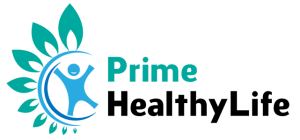Too many unintended tongue bites, disturbing saliva chokings, or difficulty managing food in the mouth are not just accidental; they are signs of disturbed oral and facial structures. These are a crucial foundation for your posture, airway stability, and oral spatial perception. When the foundational mechanics of these systems falter, humans begin to drift, subtly at first, into patterns that seem unrelated, such as fatigue, tension, or even mood shifts. That makes treating such conditions tricky with general treatments. However, OMT offers a specialized treatment plan that helps recalibrate foundational muscles at the point where form meets function.
1. Tongue Posture and Strength Exercises
If there’s a starting point for functional health, it’s here, the tongue. It’s not just a muscle; it’s command central for breathing, swallowing, and even posture. When it’s weak or misplaced, everything downstream from airway flow to jaw structure to sleep quality starts to shift off course.
Professional Myofunctional Treatments like Tongue Suction Holds and Tip Elevation drills may look simple. Still, their purpose is radical: they retrain the brain to hold the tongue where it belongs—up, strong, and stable. For those dealing with speech issues, fatigue, or airway collapse, this is where things begin to turn around.
What separates experts from amateurs here is not how many exercises they teach, but how precisely they guide them. It’s not repetition—it’s neuromuscular intelligence. Each session is a recalibration of the body’s blueprint, a small but permanent act of restoration.
2. Lip and Facial Muscle Exercises
The face speaks long before words do. Every imbalance—tight cheeks, drooping lips, tense jaws—tells a story about function gone astray. The goal of therapy here isn’t cosmetic; it’s systemic. A firm lip seal and balanced facial tone don’t just create symmetry—they rebuild how air moves and how the face holds its strength.
Professionals who understand this don’t push for brute-force correction. They leverage crucial sensory feedback and neuromuscular awareness to wake up muscles that have forgotten the sync of working together. Such targeted refinement includes:
- Lip Seal conditioning
- Cheek rebalancing
- Myofascial release—each carefully tuned to rebuild coordination, not just strength.
It’s about restoring coherence with beauty. Because when facial function is in rhythm, everything from confidence to breathing and aligned development begins to align and stabilize.
3. Swallowing Retraining (Deglutition) Exercises
Swallowing isn’t just an act—it’s a symphony of precision. One wrong note, and the entire rhythm of digestion, airway function, and jaw balance can collapse. That’s why Deglutition Retraining isn’t a side note in therapy—it’s a game changer.
Through spot-swallow drills and bolus-control techniques, clinicians teach patients to regain control of their movements. Water, paste, or food textures become tools of awareness—reminding the body how to coordinate in harmony again.
But this isn’t robotic repetition. It’s observation, intuition, and data rolled into one. The best practitioners use digital tracking, visual feedback, and deep patient collaboration. They know every swallow tells a story—and with each correction, the story becomes more balanced, more intelligent, more human.
4. Breathing Retraining
Breathing is survival, but in therapy, proper breathing is a life-rejuvenating strategy. Mouth breathing is easy but unhealthy. It deprives oxygen, dulls focus, and distorts facial structure. Restoring nasal breathing isn’t just about airflow—it’s about energy, cognition, and longevity.
True professionals lead this change with quiet precision. They teach posture realignment, breath pacing, and the subtle art of tongue resting to rewire breathing from the ground up. To make progress last, they go deeper—addressing the habits that sabotage function.
- Unwanted Habit interruption: Breaking virtue cycles like thumb-sucking or open-mouth rest.
- Neuromuscular retraining: Teaching the body to override faulty muscle habits and replace them with positive habits, and retain them. For example, breathe intelligently, not automatically.
- Endurance conditioning: Building stamina for sustainable oxygen flow.
This isn’t a short-term fix—it’s a physiological revolution—a recalibration of life’s most automatic act into one of deliberate, restorative power.
Ultimately, the future of therapy isn’t built on routines but on motor and somatic intelligence and body awareness. Myofunctional therapy isn’t about fixing problems; it’s about teaching the body to thrive again. For clinicians and innovators committed to mastery, every session is more than care—it’s the art of rebuilding what the body once knew but forgot how to do beautifully.


